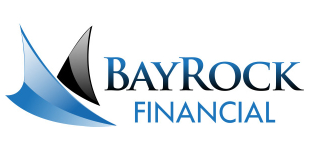Contributing To My Roth 401(k)
Should I Contribute To My Roth 401(k)? Roth 401(k)s have become an increasingly popular alternative to traditional 401(k)s, allowing participants to make after-tax salary deferrals to your employer plans. You may have the opportunity to contribute to a designated Roth account in your 401(k), but are uncertain about the best savings strategy for your personal circumstances.
This flowchart helps you be guided through a series of considerations that will inform your decision whether to contribute to a Roth 401(k), and covers:
-
Future tax rate expectations
-
Roth IRA eligibility
-
Employer matching considerations
-
RMDs and future rollover options
-
Additional savings opportunities through backdoor Roth contributions
Download: Contributing To My Roth 401(k)
Contributing To My Roth 401(k)

Contributing To My Roth 401(k) Start Here

Contributing To My Roth 401(k) Aggregation Rules

Contributing To My Roth 401(k) Earned Income Required

Contributing To My Roth 401(k) What is Your MAGI?

Roth 401k vs. Traditional 401k: Which Is Best for You
By Arielle O’Shea from NerdWallet:
The main difference between a Roth 401(k) and a 401(k) rests on when you pay taxes on your employer-sponsored retirement account. With a Roth 401(k), you’re contributing after-tax money, and then you can withdraw it tax-free once you reach retirement age. A traditional 401(k) allows you to make contributions before taxes, but you’ll have to pay income tax on the distributions you take in retirement.
What is a Roth 401(k)?
A close cousin of the traditional 401(k), the Roth 401(k) takes the tax treatment of a Roth IRA and applies it to your workplace plan: Contributions come out of your paycheck after taxes, but distributions in retirement are tax-free. That means you duck paying taxes on investment growth.
About half of employers now offer the Roth 401(k) alongside the traditional version. If yours does, should you snub the status quo? Here’s a quick briefing on the Roth 401(k) vs. 401(k).
Roth 401(k) vs. 401(k): Where they differ
First, what isn’t different: The 401(k) contribution limit applies to both accounts. You can contribute up to $20,500 in 2022 ($27,000 for those age 50 or older).
You can contribute to both accounts in the same year, as long as you keep your total contributions under that cap.
Where the Roth 401(k) and the traditional 401(k) differ is how contributions and distributions are taxed.
Roth 401(k) vs. traditional 401(k)
| Traditional 401(k) | Roth 401(k) | |
|---|---|---|
| Tax treatment of contributions | Contributions are made pre-tax, which reduces your current adjusted gross income. | Contributions are made after taxes, with no effect on current adjusted gross income. Employer matching dollars must go into a pre-tax account and are taxed when distributed. |
| Tax treatment of withdrawals | Distributions in retirement are taxed as ordinary income. | No taxes on qualified distributions in retirement. |
| Withdrawal rules | Withdrawals of contributions and earnings are taxed. Distributions may be penalized if taken before age 59½, unless you meet one of the IRS exceptions. | Withdrawals of contributions and earnings are not taxed as long as the distribution is considered qualified by the IRS: The account has been held for five years or more and the distribution is:Due to disability or deathOn or after age 59½Unlike a Roth IRA, you cannot withdraw contributions any time you choose. |
Which is best for you?
This decision mainly comes down to how you want to put money into the account and how you want to take money out.
Let’s start with today — putting money in. If you’d prefer to pay taxes now and get them out of the way, or you think your tax rate will be higher in retirement than it is now, choose a Roth 401(k).
By paying taxes on that money now, you’re shielding yourself from a potential increase in tax rates by the time retirement rolls around, though your own taxable income may drop, potentially putting you in a lower tax bracket.
You’re also giving yourself access to a more valuable pot of money in retirement: $100,000 in a Roth 401(k) is $100,000, while $100,000 in a traditional 401(k) is $100,000 less the taxes you’ll owe on each distribution.
In exchange, each Roth 401(k) contribution will reduce your paycheck by more than a traditional 401(k) contribution, since it’s made after taxes rather than before. If your primary goal is to reduce your taxable income now or to put off taxes until retirement because you think your tax rate will go down, you will do that with a traditional 401(k).
-
You’re kicking those taxes down the road, to a time when your income and tax rates are both relatively unknown — and might be higher if you advance in your career and start earning more
-
If you want the after-tax value of your traditional 401(k) to equal what you could accumulate in a Roth 401(k), you need to invest the tax savings from each year’s traditional 401(k) contribution. For more on this, see our study on the Roth IRA advantage, which also applies here.
If you can’t or won’t invest that tax savings — and it could be a considerable amount, for those in high tax brackets making maximum contributions — the Roth 401(k) is a good choice.
It’s not only about taxes
Taxes are important, and they’re the primary factor in this debate. But there are other points to consider:
-
Whether you’re eligible for a Roth IRA. Roth IRAs have income limits; Roth 401(k)s do not. If you earn too much to be eligible for the Roth IRA, the Roth 401(k) is a chance to get access to the Roth’s tax-free investment growth.
-
Certain income thresholds in retirement. Taking some of your retirement income from a Roth can lower your gross income in the eyes of the IRS, which may in turn lower your retirement expenses. A lower income in retirement may reduce the taxes you pay on your Social Security benefits and the cost of your Medicare premiums that are tied to income.
-
Access to your retirement money. Unfortunately, the Roth 401(k) doesn’t have the flexibility of a Roth IRA; you can’t remove contributions at any time. In fact, in some ways it’s less flexible than a traditional 401(k), due to that five-year rule: Even if you hit age 59½, your distribution won’t be qualified unless you’ve also held the account at least five years. That’s something to keep in mind if you’re getting a late start.
-
Required minimum distributions in retirement. Both accounts require account owners to begin taking distributions at age 72, but money in a Roth 401(k) can easily be rolled into a Roth IRA, which will then allow you to avoid those distributions and even pass that money on to heirs.
Finally, remember that you can split the difference and contribute to both accounts — and you can switch back and forth throughout your career or even during the year, assuming your plan allows it. Using both accounts will diversify your tax situation in retirement, which is always a good thing.
Roth IRA Contribution Limits for 2022
The following IRS table shows whether your contribution to a Roth IRA is affected by the amount of your modified AGI as computed for Roth IRA purpose.
| If your filing status is… | And your modified AGI is… | Then you can contribute… |
|---|---|---|
| married filing jointly or qualifying widow(er) | < $204,000 | up to the limit |
| married filing jointly or qualifying widow(er) | > $204,000 but < $214,000 | a reduced amount |
| married filing jointly or qualifying widow(er) | > $214,000 | zero |
| married filing separately and you lived with your spouse at any time during the year | < $10,000 | a reduced amount |
| married filing separately and you lived with your spouse at any time during the year | > $10,000 | zero |
| single, head of household, or married filing separately and you did not live with your spouse at any time during the year | < $129,000 | up to the limit |
| single, head of household, or married filing separately and you did not live with your spouse at any time during the year | > $129,000 but < $144,000 | a reduced amount |
| single, head of household, or married filing separately and you did not live with your spouse at any time during the year | > $144,000 | zero |
Amount of your reduced Roth IRA contribution
If the amount you can contribute must be reduced, figure your reduced contribution limit as follows.
-
Start with your modified AGI.
-
Subtract from the amount in (1):
-
$204,000 if filing a joint return or qualifying widow(er),
-
$-0- if married filing a separate return, and you lived with your spouse at any time during the year, or
-
$129,000 for all other individuals.
-
-
Divide the result in (2) by $15,000 ($10,000 if filing a joint return, qualifying widow(er), or married filing a separate return and you lived with your spouse at any time during the year).
-
Multiply the maximum contribution limit (before reduction by this adjustment and before reduction for any contributions to traditional IRAs) by the result in (3).
-
Subtract the result in (4) from the maximum contribution limit before this reduction. The result is your reduced contribution limit.
See Publication 590-A, Contributions to Individual Retirement Accounts (IRAs), for a worksheet to figure your reduced contribution.







